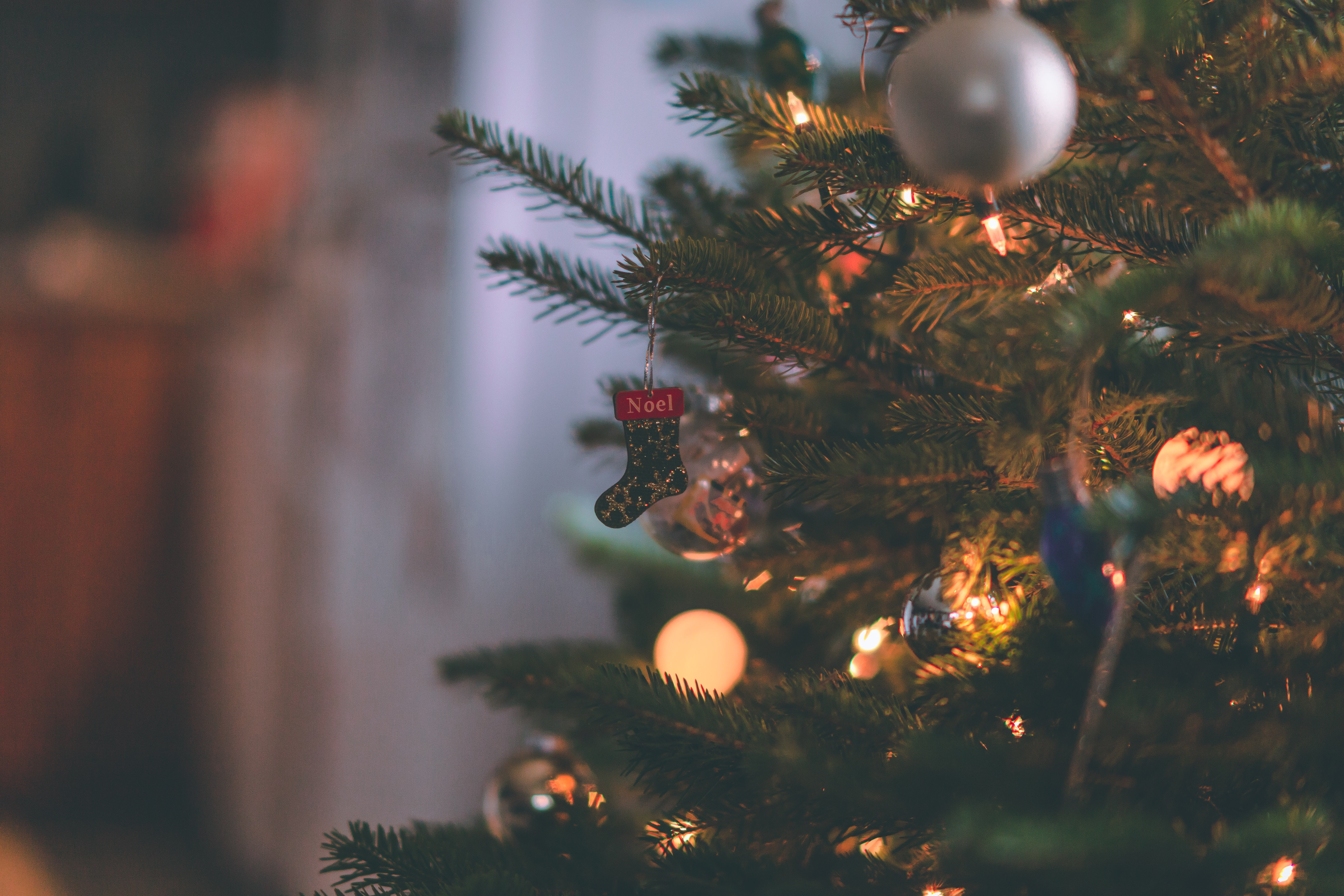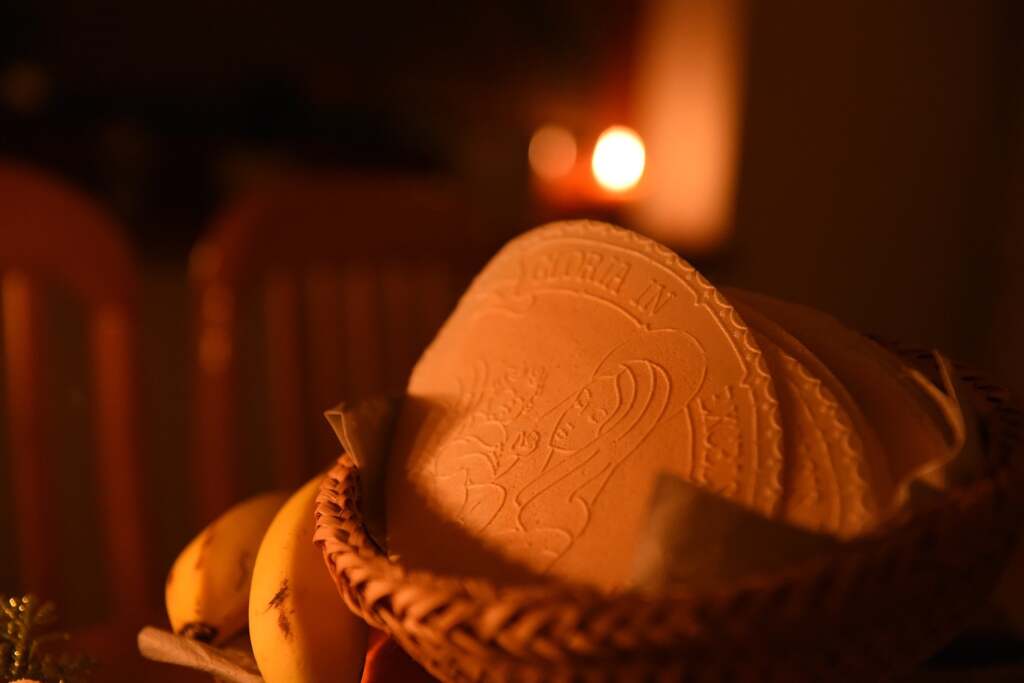
Good wishes, fortune telling, superstitions and faith in V4 countries
Countless traditions of Christian and pagan origin still live on in Central Europe today, where, in addition to Midnight Mass on Christmas Eve and the nativity scene, superstitions bringing good luck and foretelling the future also fit well. V4NA has collected the Christmas traditions of Poland, the Czech Republic, Slovakia and Hungary.
Faith and superstitions meet on Christmas Eve
Poles take their Catholic heritage seriously, which is reflected in their traditions. Christmas dinner often consists of 12 dishes, which symbolise the 12 Apostles of Jesus Christ and also bring good luck for the family throughout the twelve months of the coming year. It is a tradition still observed in many places that families wait until the first star appears in the sky before sitting down to the festive table, and no one is allowed to stand up until the end of the meal because that would bring misfortune.
Beetroot soup is a must-have dish on the menu, but as some children are reluctant to eat it, their parents sometimes relent, serving them dumplings with mushrooms. Devout Polish families normally have a meatless Christmas dinner in remembrance of the animals that accommodated and kept Infant Jesus warm in the manger. Cakes with poppy seeds, a guarantee of good luck and abundance for the future, are also an integral dish on the festive table.
The sharing of oplatek, an unleavened wafer, is also a tradition with Catholic roots, representing the breaking of bread.

Families share the large wafer while wishing plenty of good tidings to each other. The usually round wafer is broken into as many pieces as the number of family members gathered at the table and distributed to them. Each family member breaks a piece of the oplatek and passes it on to the rest of the relatives, exchanging good wishes and stating how much they care for and forgive each other.
Customarily, on 24 December, Poles had to be very much heedful of what activities to engage in or refrain from as they believed that the nature of this day forecasted what the next year would be like. In keeping with old traditions, Poles were to not borrow or lend anything on this day to prevent good luck from leaving the home. They were not allowed to chop wood in order to ward off headaches and were advised against hammering a nail in as that could cause toothaches. Children had to look into their school notebooks for at least a moment to keep them from losing interest in learning and to ensure good academic achievement in the next year. Clothes were never dried and nobody ever slept during daytime on this day, as that would bring illness. Quarrels were forbidden in order to prevent any hostilities from developing within the family.
In Poland, Christmas Eve draws to a close with Midnight Mass. In villages, people believed that the first person to cross the threshold entering the church would have the most bountiful harvest of crops the following year.
Christmas time can bring good news for young girls
In the Czech Republic, customs rooted in paganism are still practised alongside Christian traditions associated with Christmas. Fortune telling and magic spells blend well alongside staging a nativity scene.
Carp, usually served fried, is a ubiquitous part of the Christmas menu in Czechia. According to tradition, all who place a scale from the carp eaten for dinner under their plate will have no financial problems the following year.
Kapr po staročesku: Kapr je v našich končinách velmi oblíbená ryba, a to nejen na Vánoce. Smažený kapr je klasika, ale velmi dobře chutná i … https://t.co/D3iSPH6KNt pic.twitter.com/dI2zSGjKGF
— Receptnajidlo.cz (@receptnajidlo) December 22, 2021
Christmas is an especially anticipated time for young girls as they can learn whether they will find true love in the next year. Girls of marrying age place a twig from a cherry tree in a vase of water on 4 December, and if it brings bloom by Christmas, they can expect to be wed in the coming year.
Girls can also use a different practice to foresee their future. In keeping with traditions, on Christmas Eve, they are to stand with their back towards the front door and throw a shoe over their shoulder. If the toe of the shoe is facing the door when it lands, she will find love before next Christmas.
Interestingly, although Santa Claus brings the presents in most countries, the Czechs keep faithfully to the tradition of baby Jesus, bringing the children’s anticipated rewards for their good deeds. Saint Nicholas visits the households of the Czech Republic bringing small gifts on 5 December, but this is a separate celebration from Christmas. Perhaps the magic of the holidays causes Czechs to not even ask how an infant can carry so many presents, but his arrival is always announced by the ringing of a bell which summons children from the Christmas Eve dinner table to the decorated tree, the culmination point ending an intimate celebration.
Minstrelsy and nativity scenes are traditions alive
In Hungary, Catholic traditions prevail during the Christmas season, which begins with Advent. Every Sunday in the four weeks before Christmas, people light a candle on the Advent wreath, in spiritual preparation for the holiday. Advent is a celebration of anticipating the birth of Jesus, and the candles on the wreath represent his life. Nowadays, many cities organise common candle-lighting ceremonies on Sundays during the Advent season, which are made festive with various programmes.
An ancient pagan custom of the winter solstice was the „regoles”, where men went from house to house and greeted the inhabitants with abundance and fertility chants. This custom usually took place on the second day of Christmas, on the 26th and, after offering good wishes to the family, those chanting the popular songs or lays (the “regolok”, in Hungarian) would ask for a donation.
Nativity plays, one of the most popular and best known customs, is also a long-running tradition in Hungary. The nativity play tells the story of the birth of Jesus, when the shepherds and the three kings visit Mary and the baby in the manger.
In Hungarian families, the Christmas tree is usually decorated on 24 December, and the festive table is laden with delicacies on Christmas Eve. Since many families have a tradition of slaughtering pigs before Christmas, stuffed cabbage and sausages are usually part of the Christmas menu. But fish soup and fried fish, as well as the traditional Hungarian Christmas cake “bejgli”, typically filled with walnuts or poppy-seeds, are also a must in several places.
A bell on the Christmas tree signals to the children that baby Jesus or the angel has arrived with the presents, and the day traditionally ends with midnight mass.
A rich, abundant day
In Slovakia, Santa Claus arrives to the little ones on 6 December, but they also receive gifts on the 24th. On Christmas Eve, Slovaks celebrate “Stedry den”, which means a rich, abundant day. This is because the holiday used to be preceded by rigorous fasting, to be rewarded later with a hearty meal.
Slovak families observe a wide variety of Christmas traditions, with each region boasting its own characteristic menu during the festive season. In the eastern part of the country, the most common dishes are mushroom soups, sour soups, and pierogis, but there are also dishes related to the Russian, Ukrainian, and Ruthenian cuisine, and specialities such as wafers with honey and garlic, or fried raised dough pastries, mainly rolled up in poppy-seeds. Slovak’s typical Christmas dish is a cabbage soup, which has several variations, and in the southern regions, fish soup is typically part of the menu. Fish is also served fried in several places, cut into horseshoe shapes to bring luck.
According to Slovak tradition, after the dinner on Christmas Eve, family members give presents to each other and sing carols together, and the evening ends with the midnight mass for Christians.
Tags:

